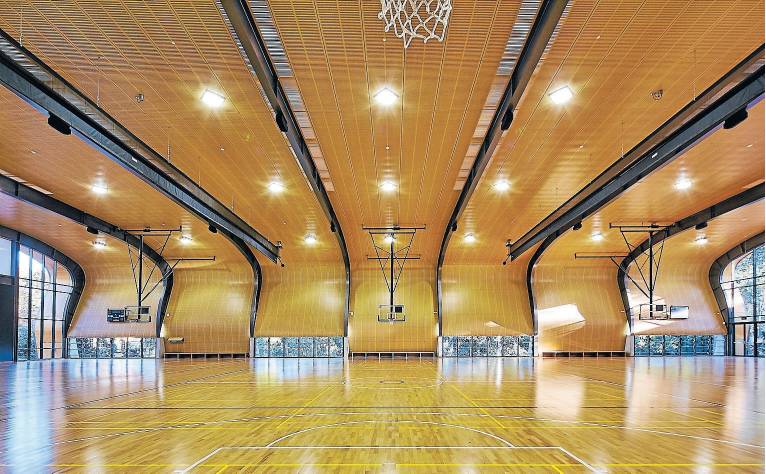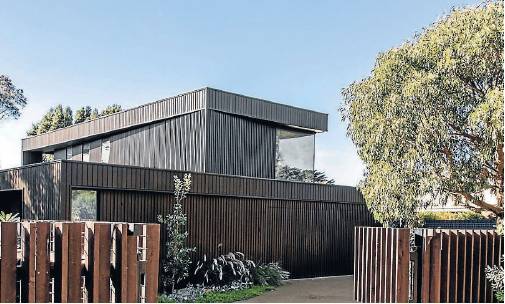Branches in city’s growth
Everywhere you look these days, there’s a new block of units. Huge skyscrapers spring from the earth across Australia with train-like regularity, each prepared to house hundreds of thousands of people during its lifespan. That’s the good news.
The bad news is that every time a building is erected, the environment suffers. Whenever humankind builds another structure, so plays out another move in the longest game of tug-of-war in history.
As big as you might imagine a building’s environmental footprint to be, it’s always bigger. There’s always something else to consider, from the impact on the surroundings at the site of the foundation to the materials used in the construction itself.
‘‘More than ever, people want to know about environmental impacts,’’ says thinkstep Australasia managing director Barbara Nebel.
‘‘The problem is that credible information has always been at a premium.’’
No matter the industry, there’s a tendency to look back on the ‘‘good old days’’, when things were just generally better. In the construction industry, there’s a mixed legacy: for every gorgeous colonial-era timber house, there’s an asbestos-laden housing commission site.
As consumers become aware of how dwellings affect their wellbeing, health and the environment, environmental practices and considerations have become more urgent in the built environment.
‘‘We can thank the timber industry for pushing for EPDs in Australia,’’ Nebel says.
Recent advancements such as the environmental product declaration (or EPD) system provide a clear vision of the environmental viability of using timber.
‘‘An EPD is a summary of a resource’s life-cycle assessment,’’ says Stephen Mitchell, chairman of the Australasian EPD Programme. For timber, that life cycle begins when it’s still a carbon dioxide-hungry tree.
‘‘Timber actually has a negative carbon footprint,’’ Mitchell says.
‘‘It spends a lifetime absorbing carbon dioxide, which offsets whatever carbon expenditure that accompanies its use in building.’’
The cold, hard facts provided by an EPD have given timber a shot in the arm. Long regarded as a solid resource for building, timber’s barebones qualities led to it being overlooked for decades.
Now, with its environmental benefits quantified and verified, timber is back.
‘‘For a long time, timber was only seen as a prefabricated solution for low-rise residential projects, with no further application,’’ says Paolo Lavisci, program development manager mid-rise construction at WoodSolutions. Timber is durable and it is one fifth the weight of a concrete structure,’’ Lavisci says. ‘‘That makes it ideal for building on weak soil or as an extension of existing buildings.’’
Traditionally a fixture of small and medium scale construction, timber’s renewed versatility has recently been put to the test in larger scale projects.
In 2012, LendLease built Forte, a 10-storey apartment building made from cross-laminated timber, in Melbourne’s Docklands precinct.
‘‘Forte, in particular, was something of a challenge,’’ Lavisci says.
‘‘In Australia, nobody wanted to be a timber pioneer, but LendLease took on that challenge, and now, more will follow.’’
Already, Forte is no longer alone on the timber frontier. Brisbane will soon be home to 25 King, which when completed will be the world’s tallest engineered timber office building. London is home to the innovative timber unit blocks The Cube and Dalton Lane, and Vancouver boasts the 18-storey Tall Wood Residence skyscraper.
‘‘The problem for smaller builders was always that they wanted to see timber used at that higher level before they’d get on board,’’ Lavisci says.
‘‘Now these examples are popping up. It’s a good sign.’’
With a boom in timber construction comes concerns about sustainability. How many forests have to disappear for one building to exist? According to Lavisci, none.
‘‘Australian softwood plantations are extremely efficient,’’ he says. ‘‘Logs grow at a rate of 30-40 metres squared every minute. Once engineered, that’s about 11-15 metres squared.’’
A project like Forte requires roughly 970 metres squared of engineered logs.
‘‘That takes the plantation about an hour and a half to grow.’’
Lavisci says timber also boasts a much smaller carbon footprint on the road: ‘‘Typically, for every truck delivery in a timber project, there are eight for concrete.’’
Once built, timber constructs enjoy a unique quality known as biophilic design. A hypothesis first popularised by Edward Wilson argued that humans tend to seek connections with nature. In the last 35 years, biophilic design choices such as natural light, plants, and water features have been incorporated into construction projects.
Timber buildings are the natural extension of that philosophy, Lavisci says.
‘‘Natural qualities of timber – biodegradable, robust, durable – mean that it has stood the test of time.
‘‘Some existing timber projects are 1000 years old. It’s here to stay,’’ he says.

